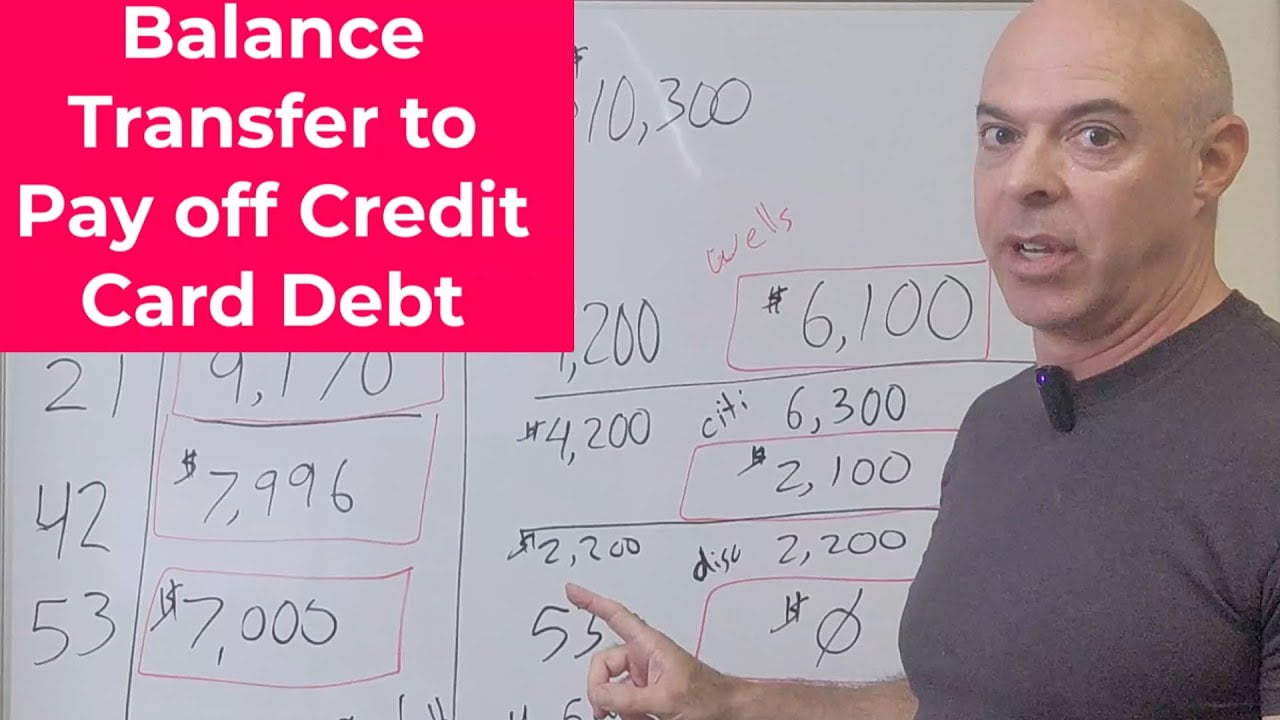How to Use Balance Transfer to Pay Off Debt Step by Step
I’m going to give you an example of using the balance transfer method to reduce your debt on your credit card. A lot of people look at their credit card statement and see that they owe, for example, $10,000, and they may be paying an interest rate that can vary from 20 to 30%. Let’s just say 20%.
It says on the credit card statement that their minimum payment is usually somewhere between 1 to 3% of the total balance. So, we’re going to go with 2% to make it simple. 2% of $10,000 is $200. It wouldn’t be uncommon for you to open up your credit card bill, let’s say you owe $10,000, your interest rate’s 20%, and they say, “Hey, you only have to make a minimum payment of $200.” What happens if you do that, and how can you reduce it faster using the balance transfer method? The balance transfer method just means that you’re opening a new credit card, moving the balance over to that card, and they’re giving you an introductory rate, usually of 0%.
There are other methods to consolidate your credit card debt, such as a personal loan that could be 18%, 16%, or another loan on your home like a home equity line of credit that could be 8 or 9%. But the balance transfer method moves it to a credit card that gives you 0%, which is substantially better. Let’s walk through how this would work to get rid of $10,000 using this method specifically. First, I’m going to use the example of cards that give you 21 months at 0%. For example, there’s a Wells Fargo card at the moment that will do just that.
Let’s say that you made your payments, and I’m going to put a link to the calculator in the description so you can see how to do this yourself. At the end of 21 months, if you made your minimum payment of $200 just staying on the card you’re on, what would you have dropped your balance to? Now, $200 times 21 is $4,200, but there’s interest, and it’s substantial. You would have dropped your balance to $9,170, I believe, maybe a few cents off. You just gave them 21 months of $200, which is $4,200, and you didn’t even decrease it by $1,000. Highway robbery! So, if you were to go with balance transfers and you went with this particular card that gave you 0%, at the end of 21 months, that’s going to reduce it by $4,200. The reason it’s so substantial is that there’s 0% interest, so all of the money is going to principal, meaning all the money is paying down the balance. So then, you take your $10,000 balance.
Typically, there’s a transfer fee, so when you move your balance to a new card, they’re going to say, “Hey, we want a percentage of that.” In this case, we’re going to say you transferred it, and they’re going to make it $10,300. So, $10,300 at the end of 21 months, minus $4,200, means your new balance will be $6,100. Keep it on the same card, you reduced your balance to $9,170. After 21 months, moved it to a card with a 0% rate and decreased it by $4,200, you’re now at $6,100 — substantially different. Now, we find another credit card that allows us to also do 21 months at 0%. There happens to be a Citi card at the moment that gives you 21 months at 0%. So, this was on a Wells card, and you can actually get that deal today.
The next one we’re going to look at would be on a Citi card for 21 months at 0%. So, you move your balance again. Now, let’s say we have to do another 3% balance transfer because we’re getting off of this Wells card, and we’re going to move that balance over to a Citi card. Let’s do that here. We can just change the balance. 3% of $6,100 is about $183, let’s just say it’s a $200 transfer fee to keep it easy. That’s going to mean that your balance is now $6,300 because to move it to this new card, they’re going to up it a little bit. Even paying these transfer fees, you’re going to see you’re still going to pay it off much faster. So now, we’re at $6,300, and we’re going to look at what happens at the 42nd month. I will have a calculator in the description so you can play with the numbers yourself.







